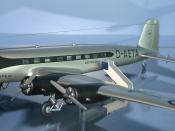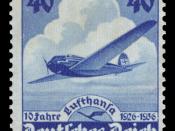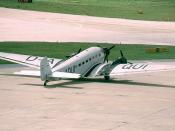Case Study: Lufthansa - National Carrier and Global CompanyToday, Deutsche Lufthansa AG ranks among the biggest and best known airlines in the world. Though most people know this company for their extensive passenger airline services, Lufthansa (LH) has become far more than that in recent years. But before we have a closer look at today's business areas of LH and at how the company copes with the different challenges in the airline industry, let us see where LH came from and how they arrived where they are today.
1.Pioneer, Complice and Flag Carrier - History within HistoryLH's history is closely linked with the general history of German aviation. In 1926, the two biggest German air services, Deutsche Aero Lloyd and Junkers Luftverkehr, were pushed to merge by the government and named Luft Hansa. The new company served 57 domestic and 15 international airports with around 170 planes. Due to the very scattered ownership structure, the board consisted of a staggering 60 members who represented the stakes of the State, the Länder, regional authorities and of private businesses.
Even though Luft Hansa did not have a monopoly on German air transportation, it was the only airline that was subsidized by the State - and like that it soon became the German flag carrier.
In the following years, Luft Hansa constantly grew and added new destination and services to its business. The creation of intercontinental routes, airmail services and night flights can be regarded as pioneer works in commercial aviation. When the Nazi Party gained control over Germany in the 1930s, they were also easily able to put the flag carrier - now renamed to Lufthansa - to work for their own most condemnable objectives. The LH fleet became virtually part of the Luftwaffe and LH's civil airmen were pressed...


